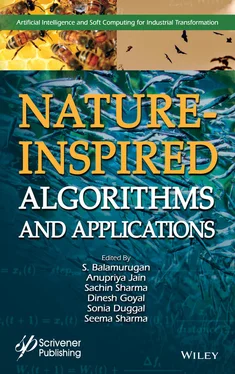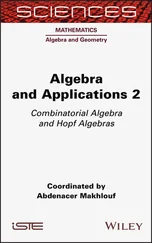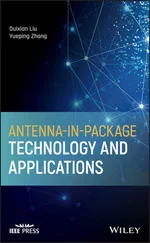232 225
233 226
234 227
235 228
236 229
237 230
238 231
239 232
240 233
241 234
242 235
243 236
244 237
245 238
246 239
247 240
248 241
249 243
250 244
251 245
252 246
253 247
254 248
255 249
256 250
257 251
258 252
259 253
260 254
261 255
262 256
263 257
264 258
265 259
266 260
267 261
268 262
269 263
270 264
271 265
272 266
273 267
274 268
275 269
276 270
277 271
278 272
279 273
280 274
281 275
282 276
283 277
284 278
285 279
286 280
287 281
288 282
289 283
290 284
291 285
292 286
293 287
294 288
295 289
296 290
297 291
298 292
299 293
300 294
301 295
302 296
303 297
304 298
305 299
306 300
307 301
308 302
309 303
310 304
311 305
312 306
313 307
314 308
315 309
316 310
317 311
318 312
319 313
320 314
321 315
322 317
323 318
324 319
325 320
326 321
327 322
328 323
329 324
330 325
331 326
332 327
333 328
334 329
335 330
336 331
337 332
338 333
339 334
340 335
341 336
342 337
343 338
344 339
345 340
346 341
347 342
348 343
349 344
350 345
351 346
352 347
353 348
354 349
355 350
356 351
357 352
358 353
359 354
360 355
Scrivener Publishing100 Cummings Center, Suite 541J Beverly, MA 01915-6106
Artificial Intelligence and Soft Computing for Industrial Transformation
Series Editor: Dr S. Balamurugan (sbnbala@gmail.com)
Scope: Artificial Intelligence and Soft Computing Techniques play an impeccable role in industrial transformation. The topics to be covered in this book series include Artificial Intelligence, Machine Learning, Deep Learning, Neural Networks, Fuzzy Logic, Genetic Algorithms, Particle Swarm Optimization, Evolutionary Algorithms, Nature Inspired Algorithms, Simulated Annealing, Metaheuristics, Cuckoo Search, Firefly Optimization, Bio-inspired Algorithms, Ant Colony Optimization, Heuristic Search Techniques, Reinforcement Learning, Inductive Learning, Statistical Learning, Supervised and Unsupervised Learning, Association Learning and Clustering, Reasoning, Support Vector Machine, Differential Evolution Algorithms, Expert Systems, Neuro Fuzzy Hybrid Systems, Genetic Neuro Hybrid Systems, Genetic Fuzzy Hybrid Systems and other Hybridized Soft Computing Techniques and their applications for Industrial Transformation. The book series is aimed to provide comprehensive handbooks and reference books for the benefit of scientists, research scholars, students and industry professional working towards next generation industrial transformation.
Publishers at Scrivener Martin Scrivener ( martin@scrivenerpublishing.com) Phillip Carmical ( pcarmical@scrivenerpublishing.com)
Nature-Inspired Algorithms Applications
Edited by
S. Balamurugan,
Anupriya Jain,
Sachin Sharma,
Dinesh Goyal,
Sonia Duggal
and
Seema Sharma

This edition first published 2022 by John Wiley & Sons, Inc., 111 River Street, Hoboken, NJ 07030, USA and Scrivener Publishing LLC, 100 Cummings Center, Suite 541J, Beverly, MA 01915, USA
© 2022 Scrivener Publishing LLC
For more information about Scrivener publications please visit www.scrivenerpublishing.com.
All rights reserved. No part of this publication may be reproduced, stored in a retrieval system, or transmitted, in any form or by any means, electronic, mechanical, photocopying, recording, or otherwise, except as permitted by law. Advice on how to obtain permission to reuse material from this title is available at http://www.wiley.com/go/permissions.
Wiley Global Headquarters111 River Street, Hoboken, NJ 07030, USA
For details of our global editorial offices, customer services, and more information about Wiley products visit us at www.wiley.com.
Limit of Liability/Disclaimer of WarrantyWhile the publisher and authors have used their best efforts in preparing this work, they make no representations or warranties with respect to the accuracy or completeness of the contents of this work and specifically disclaim all warranties, including without limitation any implied warranties of merchantability or fitness for a particular purpose. No warranty may be created or extended by sales representatives, written sales materials, or promotional statements for this work. The fact that an organization, website, or product is referred to in this work as a citation and/or potential source of further information does not mean that the publisher and authors endorse the information or services the organization, website, or product may provide or recommendations it may make. This work is sold with the understanding that the publisher is not engaged in rendering professional services. The advice and strategies contained herein may not be suitable for your situation. You should consult with a specialist where appropriate. Neither the publisher nor authors shall be liable for any loss of profit or any other commercial damages, including but not limited to special, incidental, consequential, or other damages. Further, readers should be aware that websites listed in this work may have changed or disappeared between when this work was written and when it is read.
Library of Congress Cataloging-in-Publication Data
ISBN 978-1-119-68174-8
Cover image: Pixabay.ComCover design Russell Richardson
Set in size of 11pt and Minion Pro by Manila Typesetting Company, Makati, Philippines
Printed in the USA
10 9 8 7 6 5 4 3 2 1
Inspired by the world around them, researchers are gathering information that can be developed for use in areas where certain practical applications of nature-inspired computation and machine learning can be applied. This book was designed to enhance the reader’s understanding of this process by portraying certain practical applications of nature-inspired algorithms (NIAs) specifically designed to solve complex real-world problems in data analytics and pattern recognition by means of domain-specific solutions. Since various NIAs and their multidisciplinary applications in the mechanical engineering and electrical engineering sectors; and in machine learning, image processing, data mining, and wireless networks are dealt with in detail in this book, it can act as a handy reference guide. A brief description of the topics covered in each chapter is given below.
–In Chapter 1, “Introduction to Nature-Inspired Computing,” Dr. N. M. Saravana Kumar, K. Hariprasath, N. Kaviyavarshini and A. Kavinya introduce a new discipline that strives to develop new computing techniques through observing how naturally occurring phenomena behave to solve complex problems in environmental situations. Characterization of nature-inspired algorithms are also discussed.
–In Chapter 2, “Applications of Hybridized Algorithms and Novel Algorithms in the Field of Machine Learning,” Dr. P. Mary Jeyanthi and Dr. A. Mansurali introduce various hybridized algorithms in the field of machine learning (ML) along with their applications. This chapter emphasizes the characteristics of a genetic algorithm (GA) which helps machine learning in GA’s consideration of genes (variables).
Читать дальше













